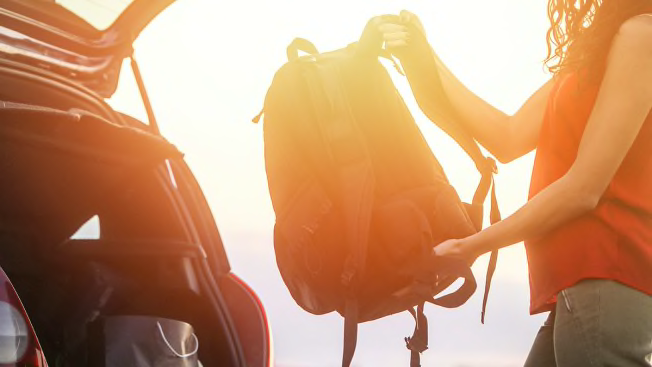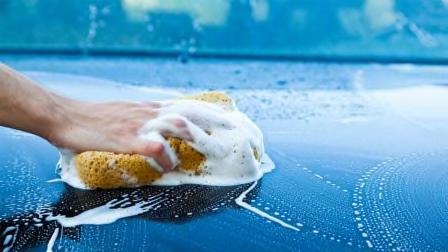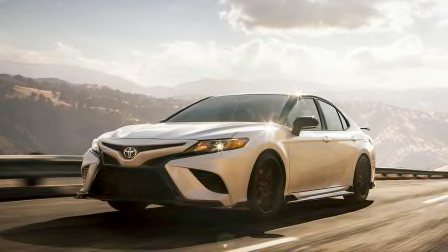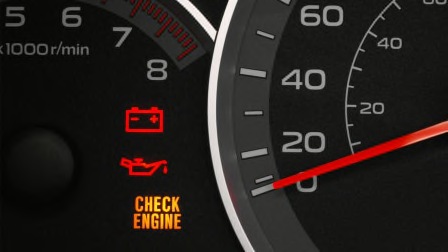How to Prepare for a Road Trip During the Pandemic
Before you hit the road, take care of some preventive maintenance, stow your bags the right way, and throw in an emergency kit

Travel in during the coronavirus pandemic, even with some state restrictions lifted, means more preparations and precautions are necessary.
It is expected that fewer people will be road tripping this year, but the exact numbers are hard to forecast. For the first time in 20 years, AAA has not issued a prediction for the Memorial Day weekend—there are just too many unknowns.
Preparation and Personal Safety
- What’s open? Planning is especially important this year because many state parks and businesses are still closed.
- Face mask. Bring one for every passenger, and wear them in public. Even places where it looks like social distancing is in force can become crowded in a hurry.
- Call ahead. Be sure to confirm any potential restrictions for where you are traveling.
- Who are you visiting? Limit the virus exposure to yourself and others. The CDC advises to be especially mindful when visiting family and friends who may be especially vulnerable.
- Call the hotel? If you plan to stay overnight at a hotel, call ahead to make sure it is open and will have rooms available.
- Stop early and often. Stop for fuel and bio-breaks sooner than essential, just in case. Check online to see whether state-run highway rest stops are open and which facilities are in operation.
- Glove up for fueling. Carry disposable nitrile or latex gloves in your car to use when gripping the pump handle. Short of that, you can try to use paper towels that are sometimes available at the pump or have some with you to cover your hands when you grip the handle.
- Bring your own. Some gas stations have been noted to be short on paper products. So bring your own disinfectant wipes, hand sanitizers, and a toilet paper roll. Clean your hands often, including after refueling and handling a credit card for payment.
- Oil changes. For cars that need light maintenance, some quick lube shops—including Jiffy Lube and Valvoline Instant Oil Change—can perform oil changes and other services while you stay in the car.
- Tire stores and dealerships. They are open in most areas and able to provide replacement tires or a more significant repair. Check our tire ratings and buying guide.
- Roadside assistance. AAA told CR that it will continue to provide roadside assistance to members across the country, and its service providers have protocols in place to protect their safety and yours.
The Pretrip Checkup
Your vehicle will be where you spend the bulk of your time during your journey, so make sure all its functions are fine-tuned and operating at maximum performance levels.
Fluids. Check all levels: oil, coolant, brake, and windshield-washer fluids. Inspect power-steering and transmission fluid levels, if applicable. If you’re taking a long trip, schedule a service appointment to double-check these levels. (Read “How to Check Your Car’s Engine Oil.”)
Hoses. Squeeze hoses with your thumb and forefinger near clamps—that’s where they can be weakest from wear. Feel for soft or mushy spots. A good hose will be firm but bendable. Look for parallel cracks around bends; a hardened, glassy surface (which indicates heat damage); or abrasive damage. Have damaged hoses replaced.
Belts. Heat, oil, ozone, and abrasion can take a toll on belts. Look for cracks, fraying, and splits, as well as signs of glazing. Replace worn belts. (Read “How to Inspect Belts and Hoses.”)
Air filter. Remove the filter and hold it up to a strong light. If you don’t see light, the filter is dirty enough to need to be replaced. A clean air filter helps the engine run better.
Radiator. Look through the grill and be sure the radiator is clear of any obstructions.
Battery. Make sure the terminals and cables are securely attached, with no corrosion. If the battery has removable caps, check its fluid level—especially in warmer climates. Top off as needed with distilled water. (See our car battery buying guide and ratings.)
Podcast: Tales From the Road

iStock-682884886 iStock-682884886
How to Pack Like a Pro
Don’t overload your car. Weight limits are listed on the driver’s doorjamb and in the owner’s manual; the figure is for the combined weight of passengers and cargo. Don’t exceed manufacturer recommendations. These can vary widely and in some cases can be surprisingly limited. It is not uncommon for a vehicle with an adult in each seat to be near the maximum capacity—without any luggage.
Stow the heaviest items low, particularly in SUVs. This keeps the center of gravity lower, reducing the chances of a rollover. Smaller items should be packed into duffel bags or safely tucked into storage areas. Strap larger items down with cargo anchors. Don’t place heavier items on top of the cargo pile, because they can become dangerous projectiles in a panic stop or a crash.
You could opt for a roof cargo carrier, but CR tests found that a cargo carrier atop a vehicle can reduce fuel economy by as 5 mpg on a compact SUV and 9 mpg on a midsized sedan.

iStock-508512013 iStock-508512013
Your Truly Complete Car Emergency Kit
Prepare for breakdowns and make sure you have these items onboard.
Phone charger. In addition to having on hand a charging cord and power adapter, carry a small battery-based charger in case your car’s battery dies.
Basic tools. Have standard and Phillips screwdrivers, pliers, and a compact socket set.
Warning light, hazard triangle, and/or flares. These can alert motorists to your presence along the side of the road.
Tire tools. If you don’t know how to change a tire, consider learning before the trip. You could pack an easier-to-use lug or torque wrench, as well as work gloves. A short wooden board (about a foot long) can be invaluable to stabilize a jack on soft dirt or mud. Many newer cars don’t have spare tires, so familiarize yourself with your car’s “mobility kit.” Know how to reach roadside assistance in case the tire can’t be easily replaced.
Flashlight. This or a head-mounted light can be especially helpful during nighttime breakdowns or tire changes.
Jumper cables or a jump-starter. Cables can be handy, but a paperback-sized jump-starter can get your motor running on its own. Plus, many can also be used to charge portable devices.
Reflective vest. This safety measure will make you more visible in the dark.
Fire extinguisher. Pack a compact dry-powder unit for fires fueled by solids and combustible liquids and gases (class ABC). Of course, the safest response may be to get passengers far away from the vehicle and call 911.
Tips for the Perfect Road Trip
A road trip is one of life’s great adventures. On the “Consumer 101” show, host Jack Rico learns from Consumer Reports expert Mike Monticello how to prepare for a safe one.
Editor’s Note: This article originally appeared in the July 2018 issue of Consumer Reports magazine and has been updated.




















